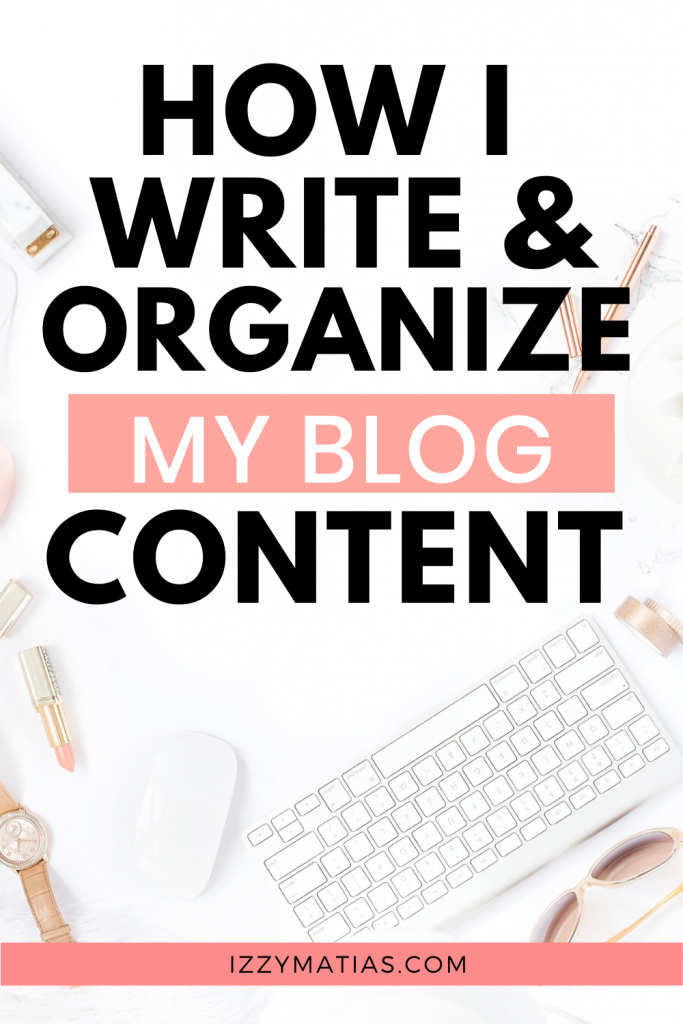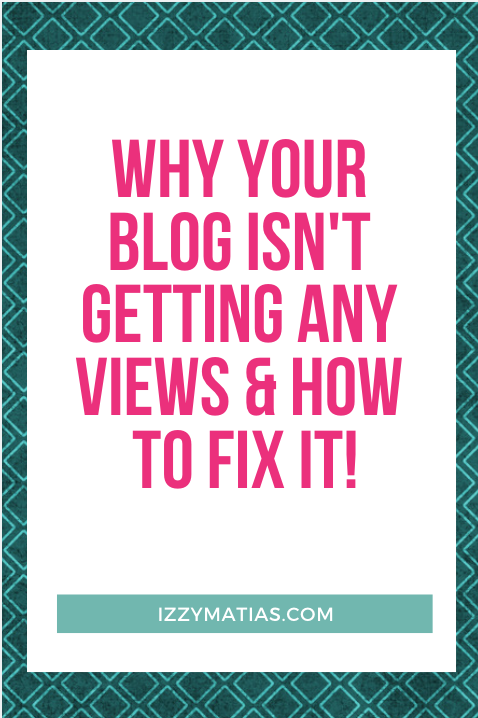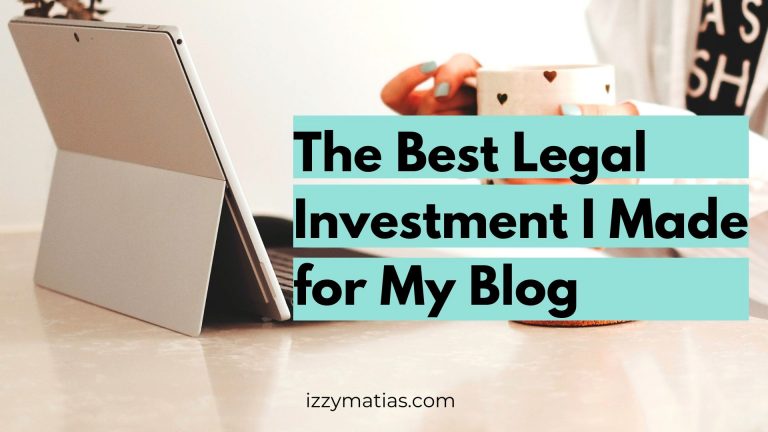How to Create a Content Strategy Plan That Works

A successful business begins with an idea, but blooms with stellar implementation.
That’s why before jumping into your content strategy plan, you have to have a business mindset, know why you want to pursue this kind of life and the type of content you need to focus on.
I’ve said it before, and let me tell you again: it ain’t easy.
If you’ve got a day job or you’re a student, it can be hard to find the time to work on your online business.
What is easy is getting so busy that you don’t sustain your momentum of creating your dream life that it once again takes a backseat.
I get that there will be times that you’ll feel so exhausted all you want to do is rest and that is why you have to remind yourself that you have to treat your blog (or vlog) as a business.
It may not sound fun labeling it as a business, but it will allow you to discipline yourself to work on it every day because it’s important to you.
For me, it’s about creating that dream life where I wake up super excited about the day sans anxiety and being able to travel whenever I want to.
Even when I’m lazy (like tonight, when I’ve been feeling overwhelmed with juggling this blog and a day job), I give myself a few minutes to sit down and write.
Even if I’m super tempted to rewatch To All The Boys I’ve Loved Before on Netflix, I remind myself that I’m doing this to build my dream life.
Benjamin Franklin’s wise words pretty much
If I don’t plan ahead, life happens and I get so busy I won’t prioritize creating my dream life.
Before I know it it’ll be four years since I wanted to pursue this kind of life.
True story guys.
Facebook reminded me just the other day that it’s been four years since I went out of my comfort zone, traveled solo halfway around the world to study Creative Writing at the University of Oxford.
It’s still one of the best times of my life, and frankly, it’s why I’m doing this.
I want to go back to being that brave, happy person who was going out of her comfort zone and experiencing new things.
With any business, you have to have a marketing plan–a strategy.
In this case, your content strategy plan.
That’s where a content calendar comes in.
This is my favourite part of the process, as I love coming up with content ideas.
It can be frustrating (and overwhelming especially when you have LOADS of ideas).
For example, when I was running a travel blog for music lovers, I had a category for live shows–these were posts that involved anything with live music.
Since I couldn’t go to a show every night, I had other content brackets like a travel guide about a specific city through the eyes of a music lover.
My main content buckets were destinations and explore the music scene.
Then from those main categories, you can flesh out subtopics so as they’re related to your brand.
It can be fun seeing how you can relate your overarching theme/topic to the categories you also want to write about.
So what I want you to do is based on the overall topic you’ve chosen, create main content buckets.
With this blog, my main theme was about creating one’s dream life. I then identified my main content buckets which were content creation tips, personal development, and travel.
After establishing your main content buckets, it’s time to get into the nitty-gritty of your content creation strategy.
Your Posting Schedule
How often will you post?
Is it weekly?
Daily?
Bi-monthly?
There is no right or wrong answer here so as long as it works for you and you can stick to your schedule.
I recommend starting with weekly posts that way you have more time to plan ahead.
Choose quality over quantity at any time.
This is how you get people to read your blog and grow your community.
What’s the point of creating posts full of fluff?
You gotta impress them and give them value: content that resonates.

Content Creation Plan
Now that you have your posting schedule and the topics you’ll be writing about, it’s time to plot it out into a content calendar.
If you’re posting YouTube videos, you will map out which days you’ll be uploading a video and how you’ll be promoting it on social media.
This way, you can see what tasks you can bundle together and finish in one go.
It’ll be better for your focus to finish with one task first (e.g. writing) before going to the next.
That means if you want to publish 2 videos first, I suggest you set aside time to work on scripts for both videos in one go.
That way, yo’re already in the flow of writing. You have to find that best workflow for you.
A content calendar will be your tool in combating writer’s block and inconsistency.
It will help you plan out not only your posts or videos, but also dictate what and when to share on social media.
Let’s say you posted a video tonight about your latest travel guide in Thailand, so you’ll be promoting it on your social media pages for the coming days.
Here’s a sample content calendar / workflow
| Monday | Tuesday | Wednesday | Thursday | Friday | Saturday | Sunday |
| New video [Topic] | Instagram Post | Send out E-mail promoting new video | Instagram Post | Facebook post | Instagram Post | 15 second teaser for the next video |
| Instagram stories | Instagram stories | Instagram stories |
I have a whole content creation calendar that I use in Google Sheets, which you can get here.
Since I have three main categories, I alternate categories every week and I align my Instagram posts with the category for the week.
For example, if my Tuesday blog post will be about travel, then most of my Instagram posts for that week are related to travel.
That’s why mapping out your posting schedule will allow you to see which tasks you can work on in bulk. Instead of crafting your Instagram post 30 mins to an hour every Tuesday, Thursday and Saturday, why not set aside an hour a week to plan out weekly or even monthly posts?
Check out this content calendar that will help you with consistency!
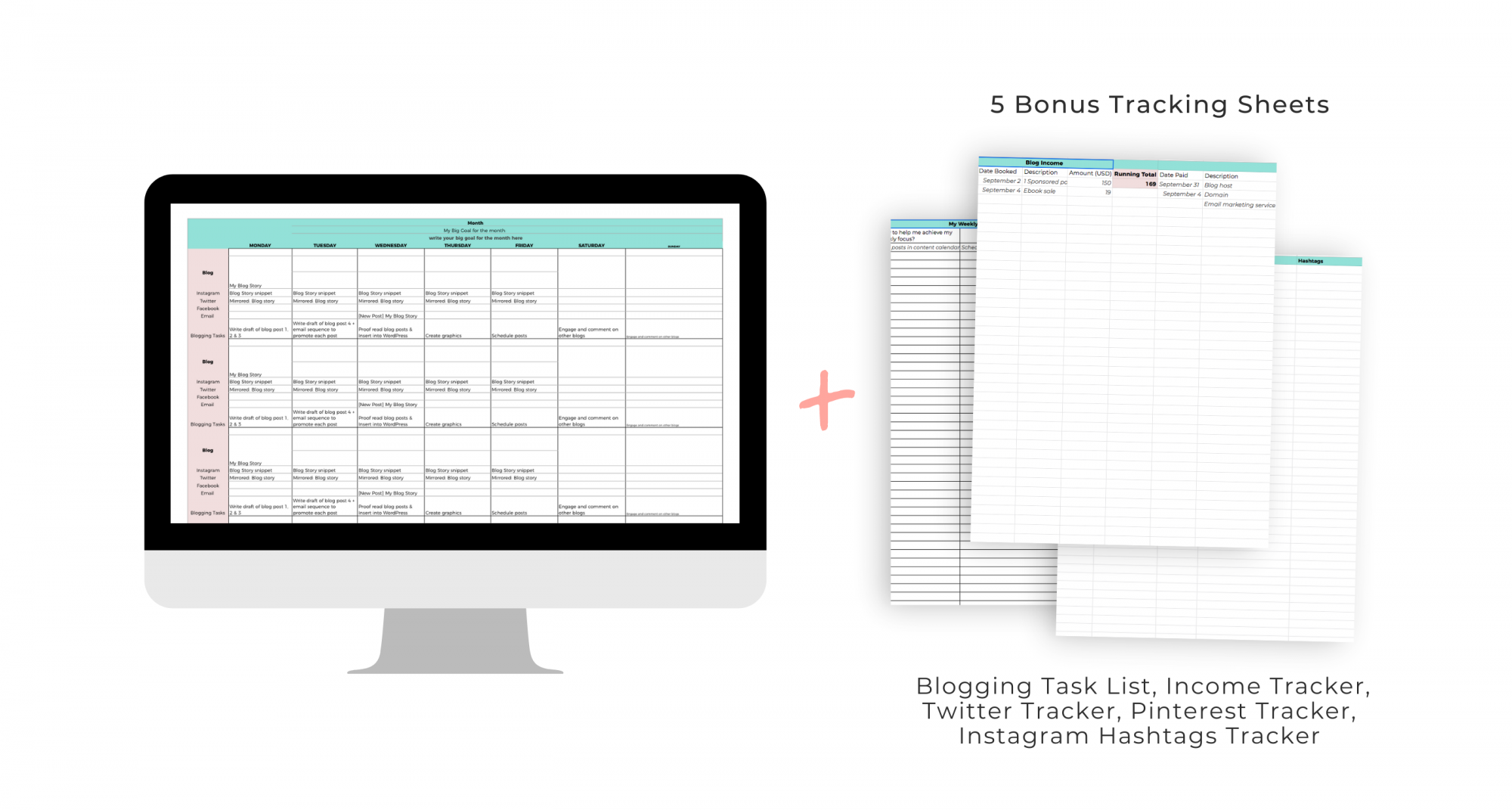
If you’re finding it difficult to start, choose a small task that allows you to get into the groove. For me, it’s writing. The first few sentences are always a struggle at first because I overthink whether or not it’s catchy enough to keep you reading, but then once I start, it’s easier to continue.
When I want to take a break, I’ll probably edit photos or look for beautiful, free stock photos if I don’t have time to go out and shoot.
But what if you want to publish two YouTube videos a week, but you also want to grow on Instagram, Facebook, and Twitter? It’s going to be hard juggling all these at once. In the beginning, choose the best platform where you can really connect with your community, and then you can automate the rest.
For example, there’s this tool called IFTTT, where you can link your blog and social media so that if you post in one platform, it’ll automatically share your content in other linked platforms. This can be helpful so that you don’t spread yourself too thin trying to grow all your social media networks, YouTube or blog at the same time. That’s the fastest way to burn out, yo!
Content Distribution
Which is the best platform to reach your community? Is it Instagram? Facebook? YouTube? Twitter? Pinterest? You’ve got to research which of these platforms your community spends the most time at and focus on that. If you’re a photographer, then your community might be on Instagram. If you’re growing your YouTube channel, then connect with fellow YouTubers.
Time and time again, I’ve been seeing a lot of successful content creators out there say that posting consistent, quality content is not enough. You have to spend just as much time, if not more, promoting it. Jade Darmawangsa shares that if it takes you one hour to create a blog post, then you also need to spend one hour promoting it. I’m still learning to balance these two because right now I spend more time creating than promoting. What I can suggest is to commit to a block of time a day e.g. 20 mins a day during your commute to promote your content.
PIN THIS!
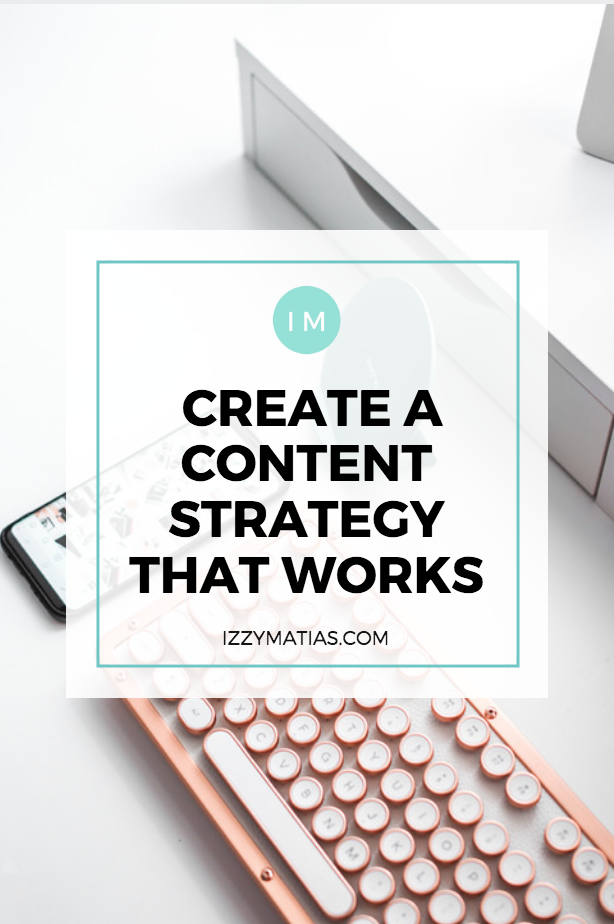
Content Strategy Plan Tools
Here are some tools I use to help me with my content calendar
- Google Drive – I like Google Drive because it allows me to access my data in any device without limitations. Some programs /apps only allow you to connect up to two devices otherwise, you’d have to upgrade to premium. With Google Drive, you can even access your data offline, which really helps if you don’t have WiFi or have purposely disconnected your Wifi to lower distractions. Within my Drive, I have a folder for my blog posts, and then I keep an excel sheet with my posting schedule in Google Sheets.
- Printed Calendar – Seeing my schedule printed or in the paper helps keep me on track. I normally just copy what I have here to my excel sheet (or vice versa) for the times I’m out of the house and need to refer to my schedule.
- Notebook – Though, I love writing things down I’m still disciplining myself to bring a small notebook with me wherever I go. If I’ve got an idea, I’ll just type it into my phone’s notes app. The last thing you want is to forget about an awesome idea!
- IFTTT – IFTTT stands for “If this, then that.” It allows you to automatically share your content across multiple platforms instead of having to craft the same content and post them manually across all your networks. Hello, time efficiency!
Planoly – I love this Instagram tool. You can plan your posts on Instagram so you can see how your feed will look like. You can move around the photos and even get a prompt for the time you have to post a photo. The best part is that you can upload your photos from your desktop and access Planoly through your desktop browser.- CoSchedule – The first time I used CoSchedule, I was sold on it. It’s a content calendar tool that links your blog and social media platforms and allows you to schedule posts. The only downside is it’s a little expensive if you’re just starting out. It really saves time though, so it’s worth the investment!
I recommend you have a content calendar like this mapped out for at least a month so that all you have to do is execute.
My goal is to be able to have a content calendar mapped out for a year (yep, super ambitious) but before I can do that, I’ll start with a monthly calendar, then quarterly, before finally doing it yearly.
What you map in your content calendar doesn’t have to be set in stone.
It’s about avoiding getting stuck thinking about what to create next because you’ve already planned it out.
Ready to proceed to the next part of the series? Continue the How to be a Successful Content Creator and Start a Blog Series:
- Why Do You Want to Be a Content Creator and Start a Blog?
- The Mindset You Need to Be a Successful Blogger & The Cost of Setting Up Your Dream Lifestyle
- What Type of Content You Should Focus On
- How to Create a Content Strategy Plan That Works
- How to Choose a Great Brand Name, Blog Host & Platform
- A Step by Step Guide to Setting Up Your Blog
Need more help? Check out the How to Start a Money-Making Blog online course.
Join my content creator course, How to Start a Money-Making Blog (Your Creative Business ) and learn to set up a solid blogging foundation.

RELATED POSTS
Want to advertise your blog? Check out the Ultimate Advertising For Bloggers Directory to find out which blogs you can advertise your blog with and grow your visibility


